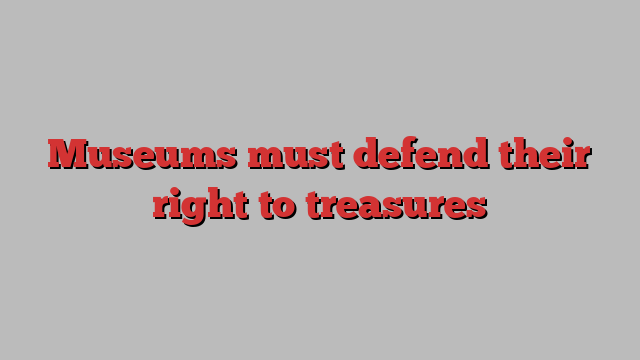
Unlock the Editor’s Digest for free
Roula Khalaf, Editor of the FT, selects her favourite stories in this weekly newsletter.
On holiday, I often struggle to remind myself that time off does not have to include forced marches through as many museums and art galleries as possible in order to be counted as a vacation “well spent”. I have even arranged whole holidays simply to see a specific museum or exhibition (and then added a lot more into the itinerary).
I blame this habit on other people: first, my parents, who similarly believe that the success of a holiday can be gauged by the number of museums you visit, and second, the curators at the Whitby Museum, which has the only surviving example of an alleged “Hand of Glory”, the mummified hands that were believed to aid robberies by keeping everyone in a house asleep.
Like a lot of children, my favourite parts of any collection were always the bodies of the dead, and while my tastes as an adult are less gothic, I still get a small thrill when I happen upon a display that features someone long dead. The Hawaiian bowl made from human teeth at the British Museum, the Egyptian mummy in Bolton, the shrunken heads (tsantsa) at the Pitt Rivers Museum in Oxford: these are the grisly exhibits that made me love museums as a child, the things that mean, as an adult, I’ll anchor a trip to another country just to see Mark Rothko’s paintings.
These are all “universal museums”: their collections span a vast range of places, times and cultures. The universal museum faces pressure on any number of fronts. The debate over its legal and moral right to the treasures it displays that has been running for centuries: essentially since the creation of the British Museum. On top of that, museums and galleries face new objections to their choice of sponsors and donors, further reducing their ability to raise money and to operate.
The arguments over controversial treasures held in museums are varied. In some cases, you have clear lines of legitimate acquisition. In others, clear cases of theft. Some, such as the Parthenon sculptures in the British Museum, are less open and shut in either direction. The treatment of the bodies of the dead, however, is not that complicated.
On my side of the argument, these are among the biggest draws, and they are simply cool to look at. The wishes and beliefs of a long-dead Egyptian monarch are, frankly, not even a second-order concern to me. Yes, the poor unfortunate whose hand was chopped off or their head shrunk by their enemies had something brutal and unforgivable happen to them — and there is certainly something ghoulish about wanting to peer at them. But that impulse attracts people, young and old, to learn something about a place and a time unlike their own.
On the other side of the argument, we can be pretty certain that the plans of the deceased did not, for the most part, include having their remains put on display for people to gawk at.
I freely concede that my argument is unattractive, and as one demonstration of that some of these exhibits, like the shrunken heads at the Pitt Rivers, are no longer on display. But the leaders of museums and art galleries need to be relaxed about the fact that there is inevitably something a bit grubby about what they are doing.
While some exhibits, including dead bodies such as the Lindow Man at the British Museum, are found by serendipity, many of them are the product of intrusive curiosity and conscious desecration. One reason why speculation about a “mummy’s curse” befalling the archaeologists who breached Tutankhamun’s tomb took the world’s media by storm in 1922 is that we already knew there was something more than a little “off” about forcing your way into someone’s grave.
Excessive curiosity is often a good thing — though it is my job to be professionally nosy so you’d expect me to say that. But museums, and indeed a great deal of knowledge about the past, would not exist or be preserved without it.
Museum leaders should defend that ghoulish urge without caveat, just as they need to present both visitors and staff with the simple and blunt trade-offs around sponsorship: museums can be asked to be less crowd-pleasing with what they display, hiding the diverting and the grisly even if it means fewer visitors, or to be more exacting about the money they take, but they can’t really do both.
We shouldn’t feel the need to engage in sophistry about the standards of the past: we should accept that these exciting and interesting places are inevitably built on an urge to stick our noses where they don’t really belong.